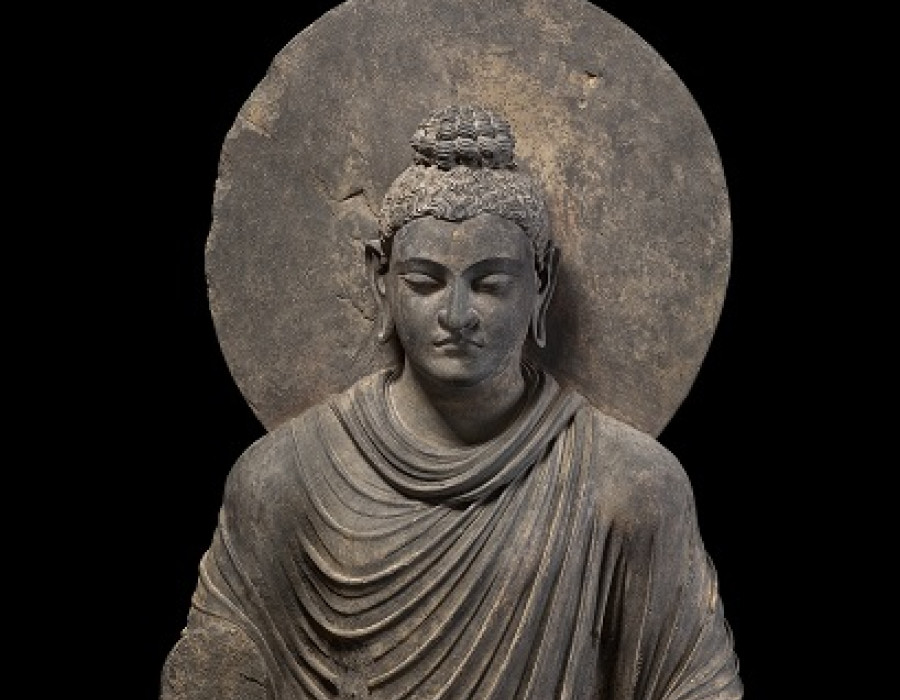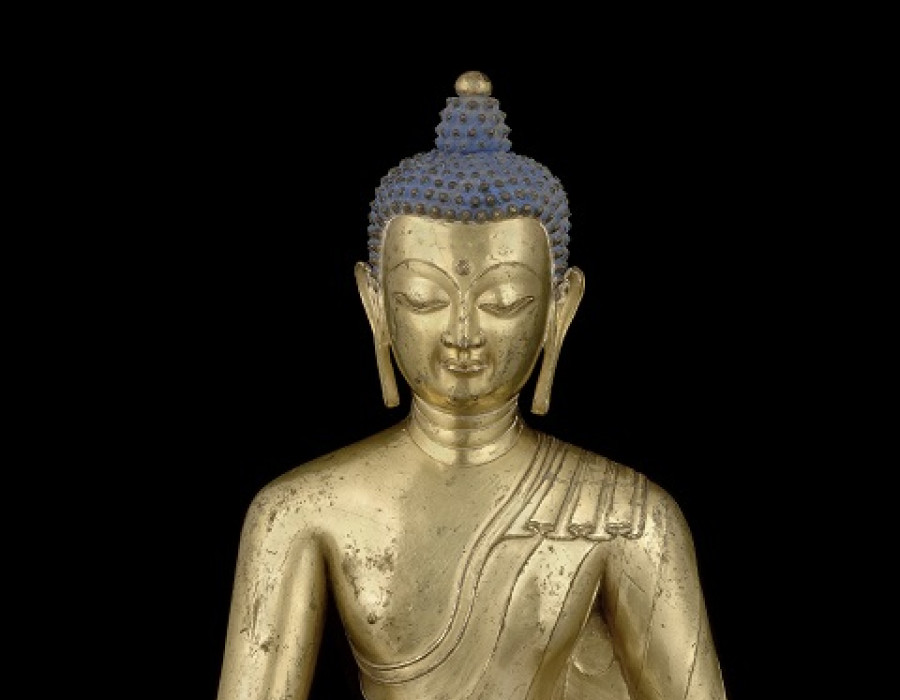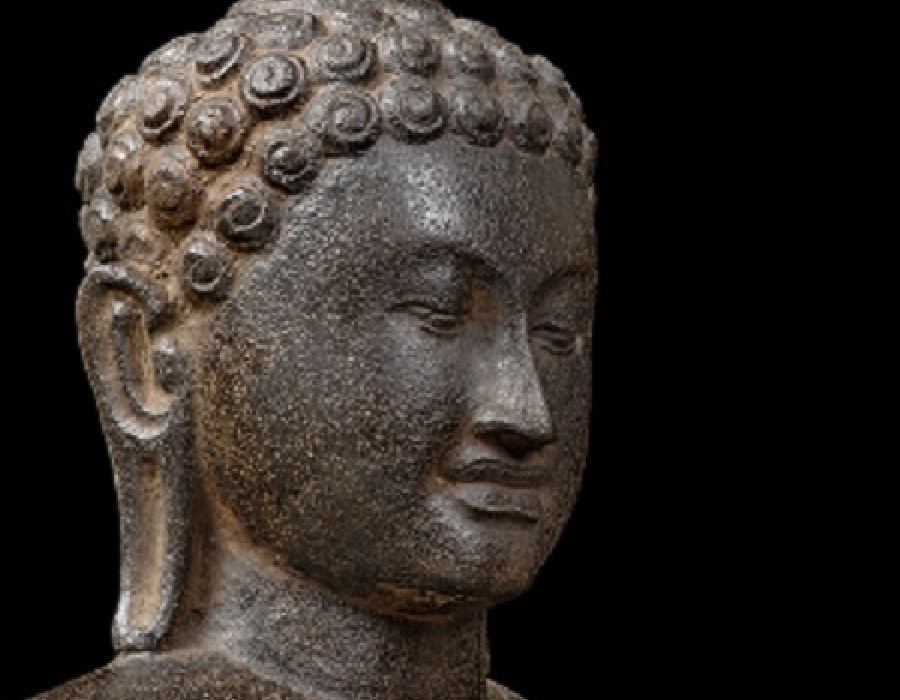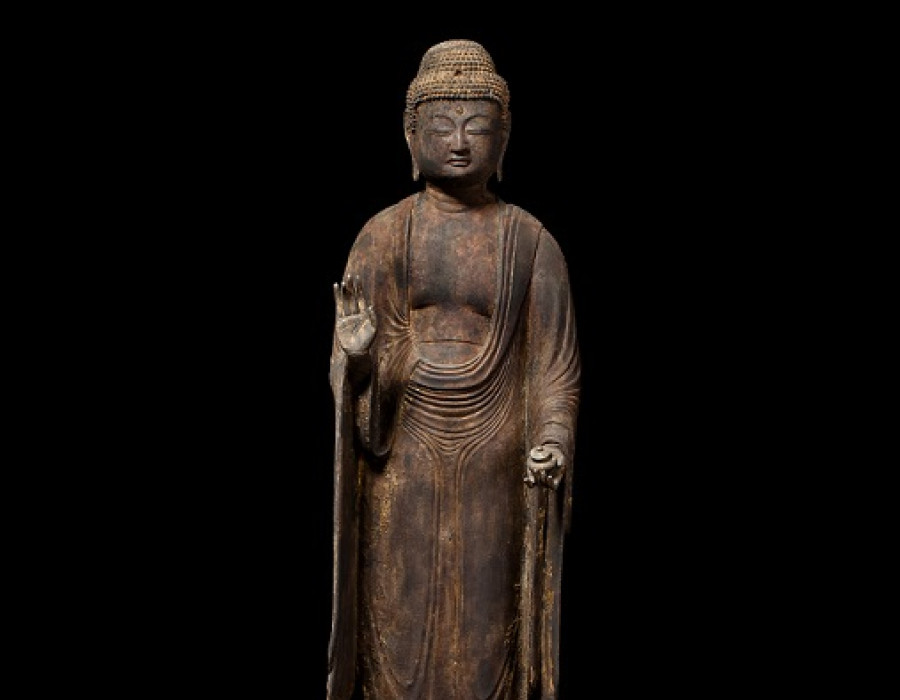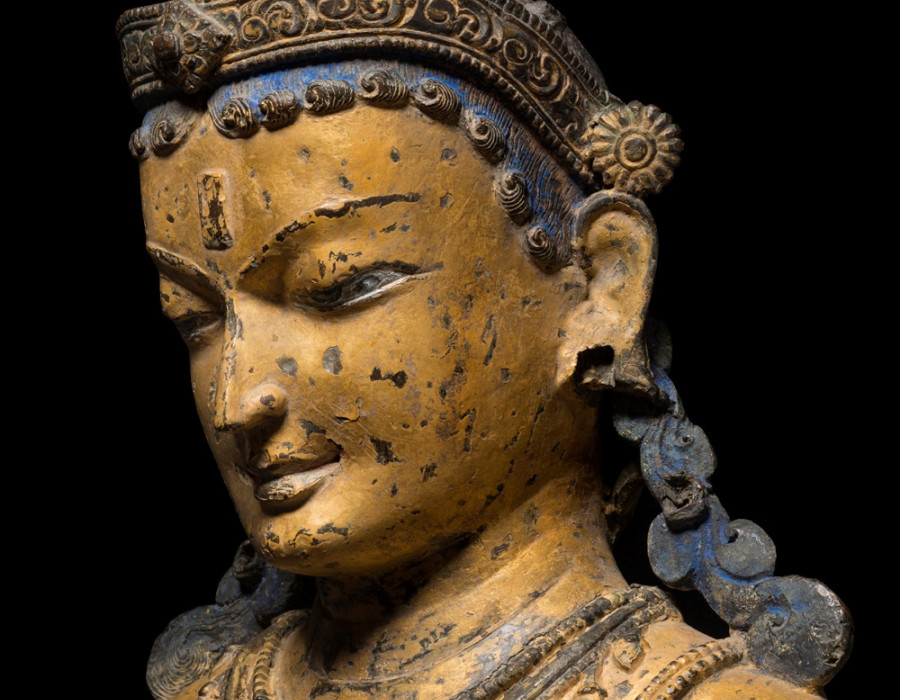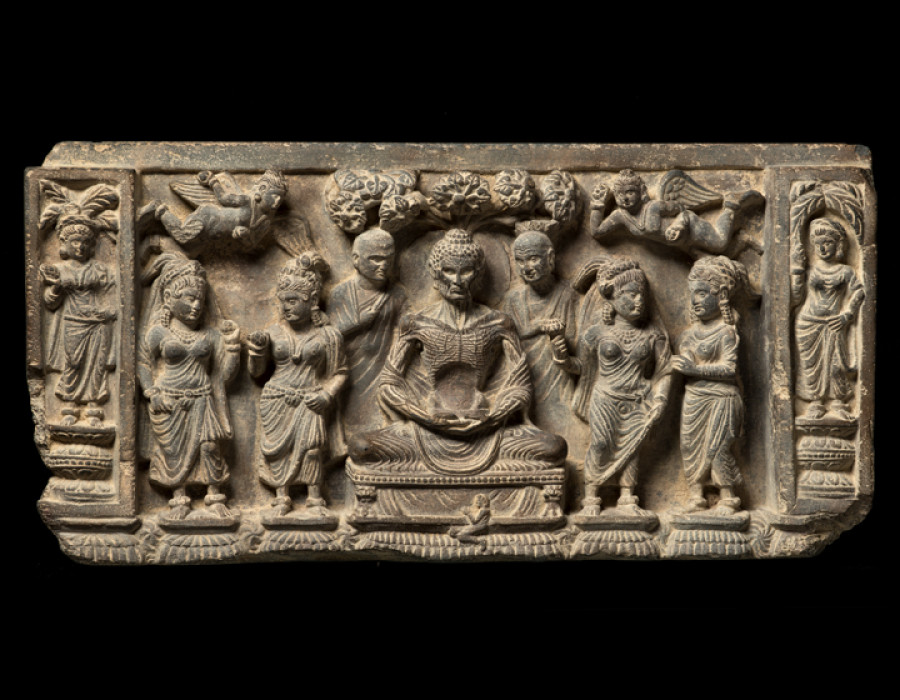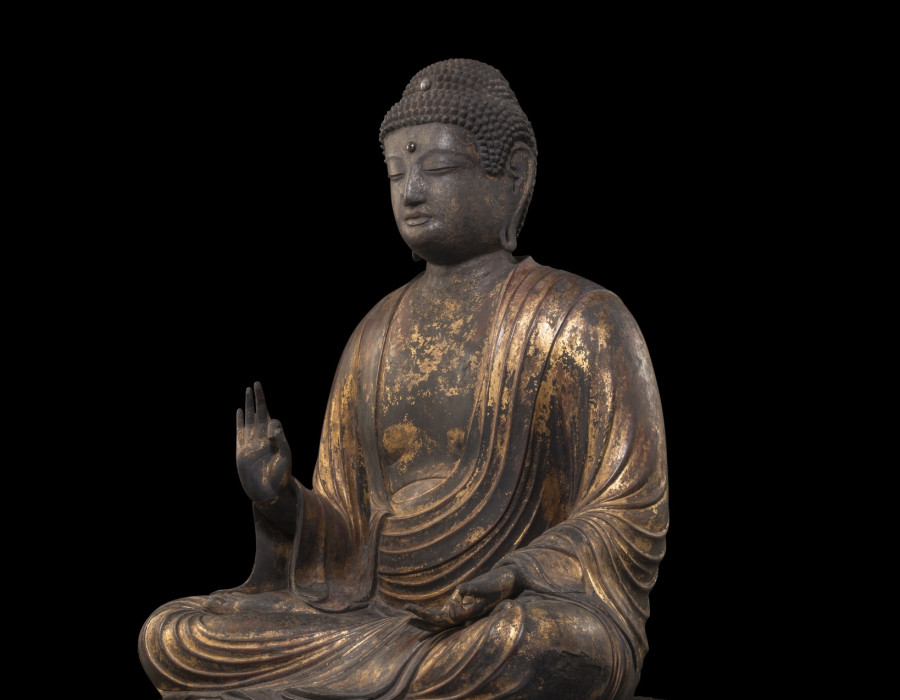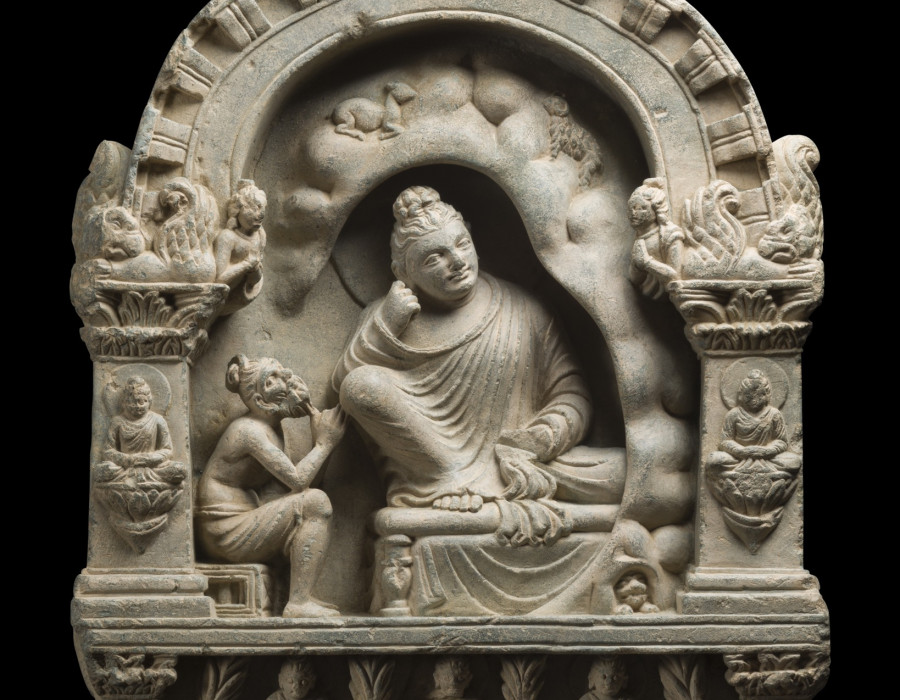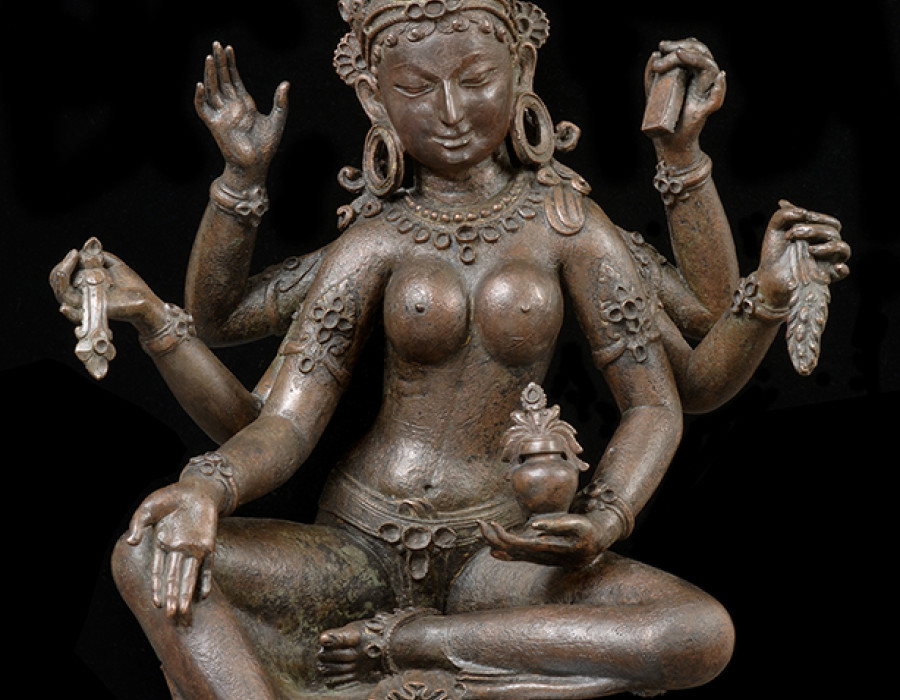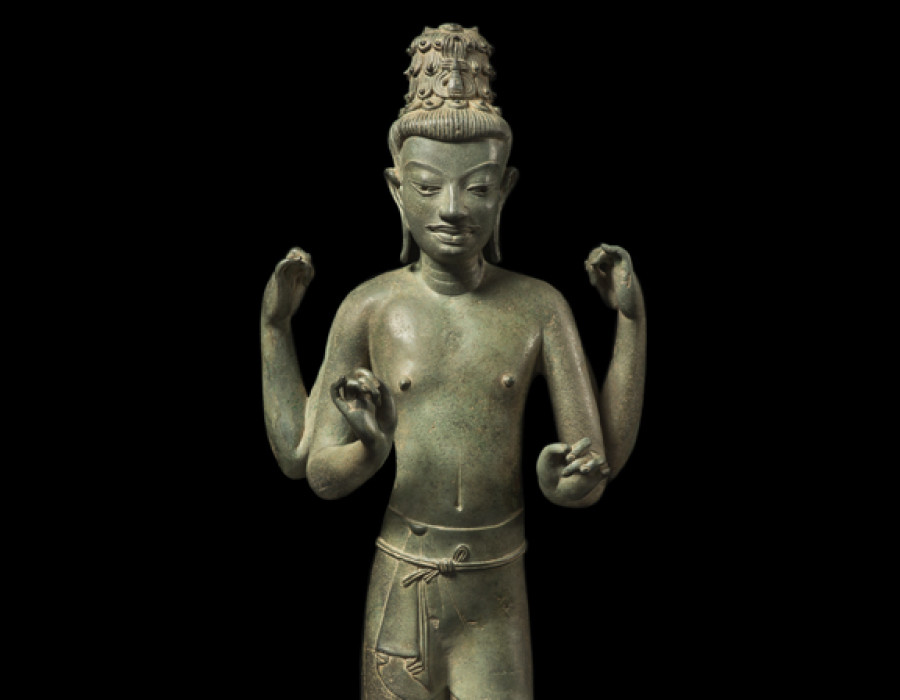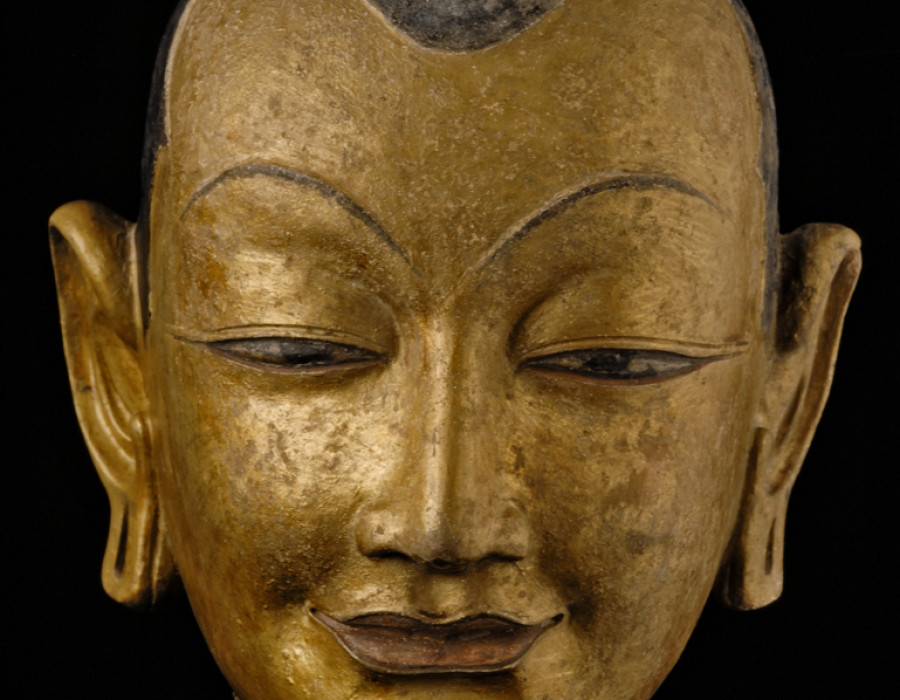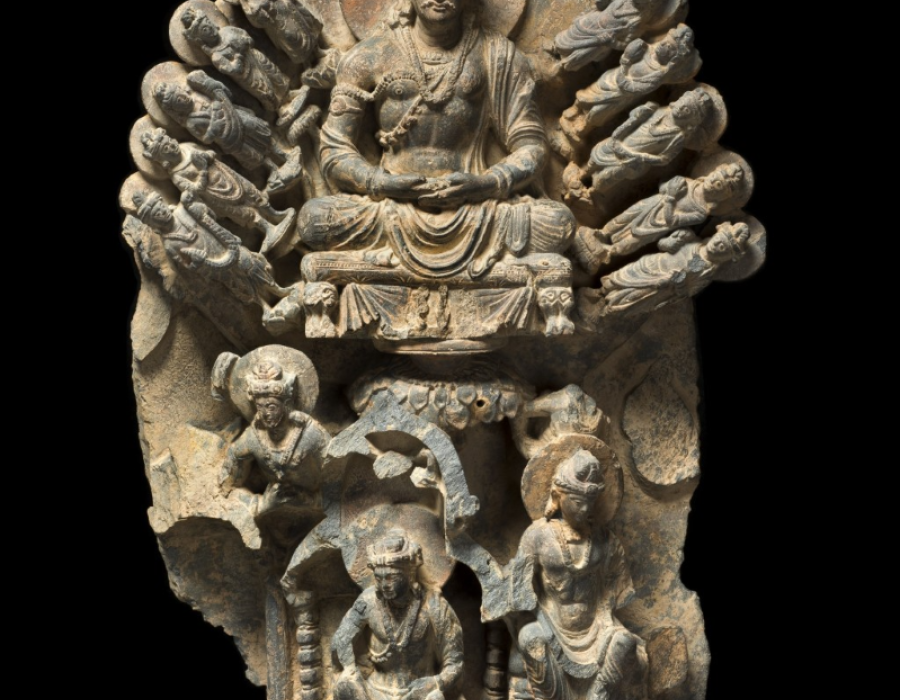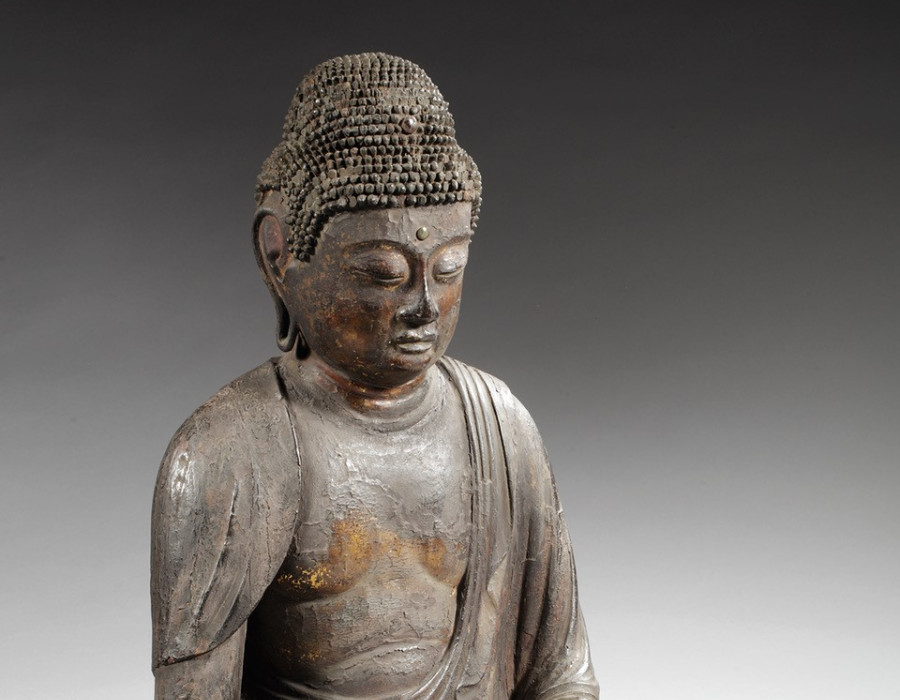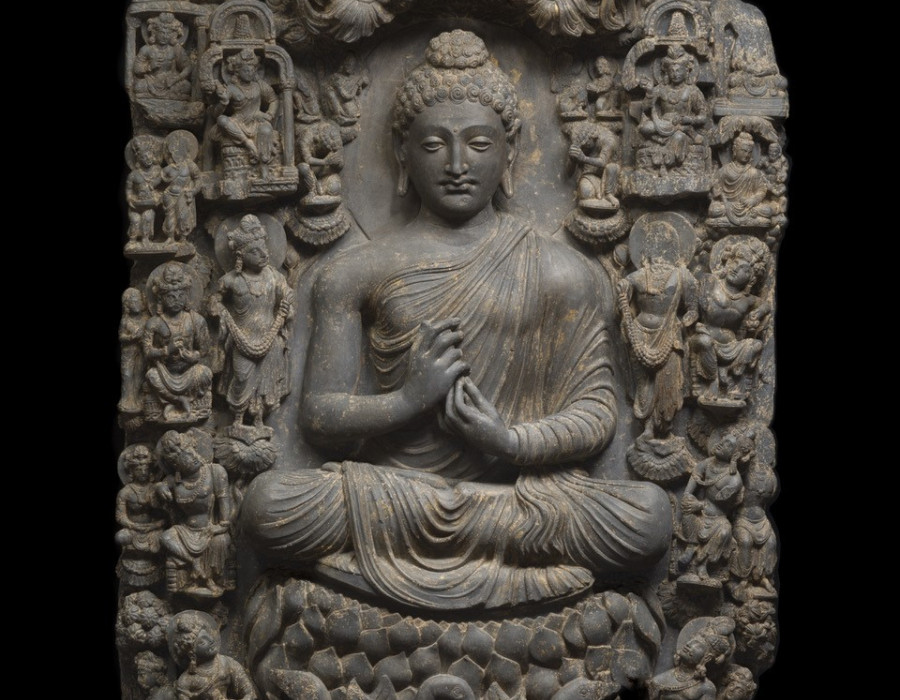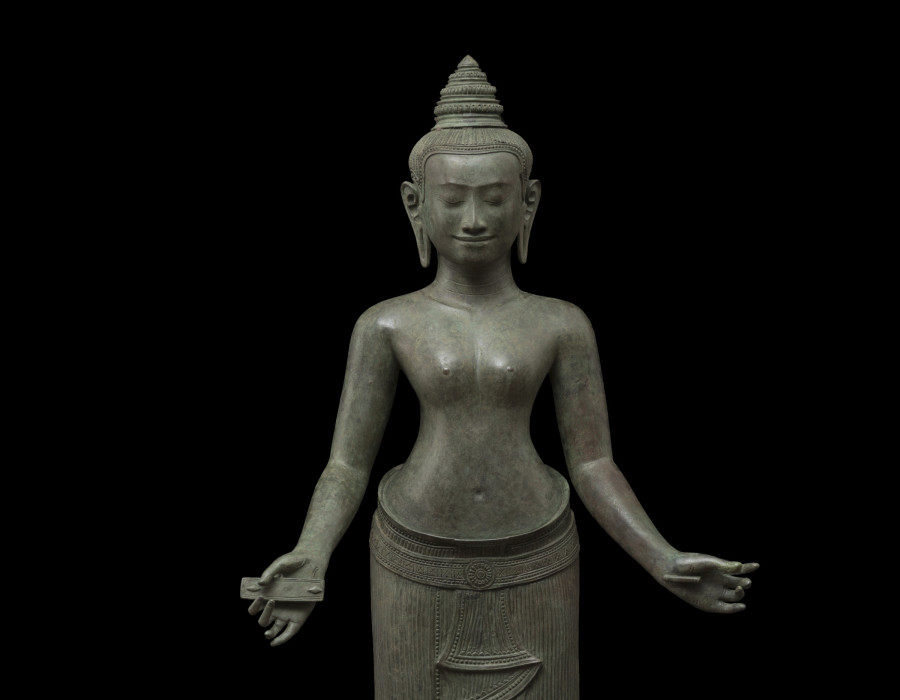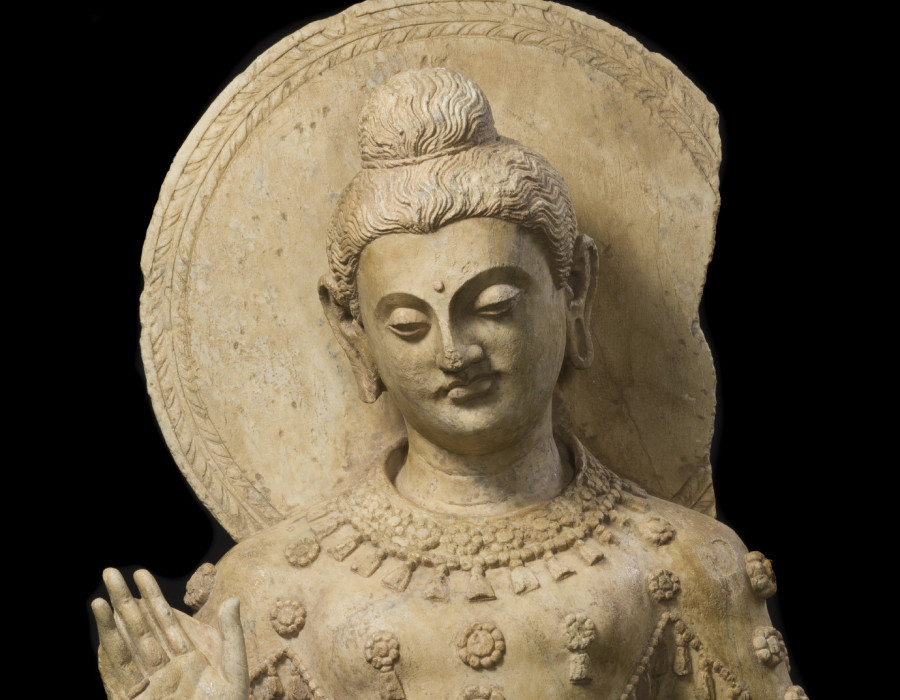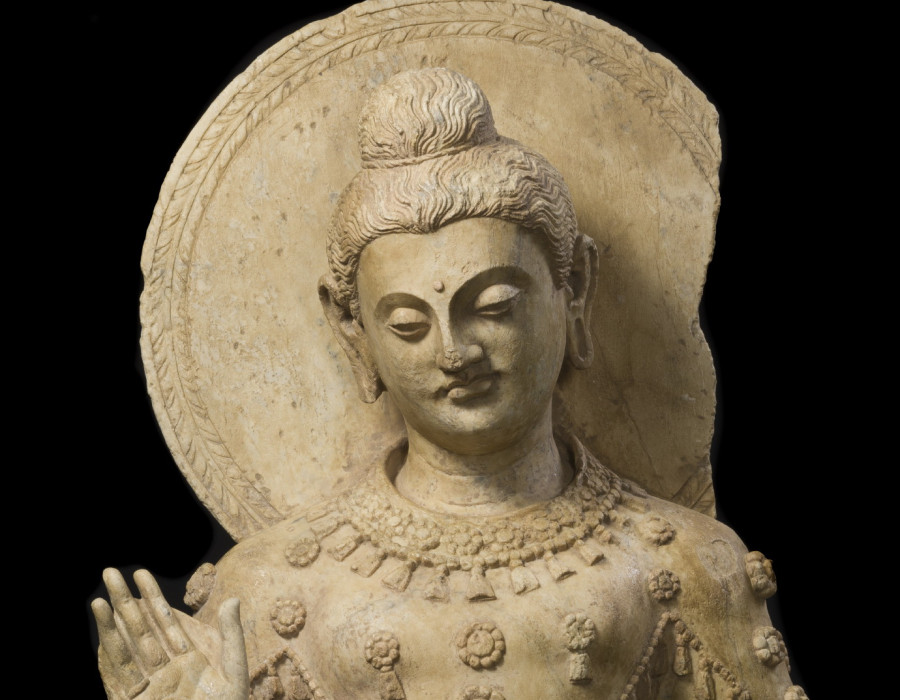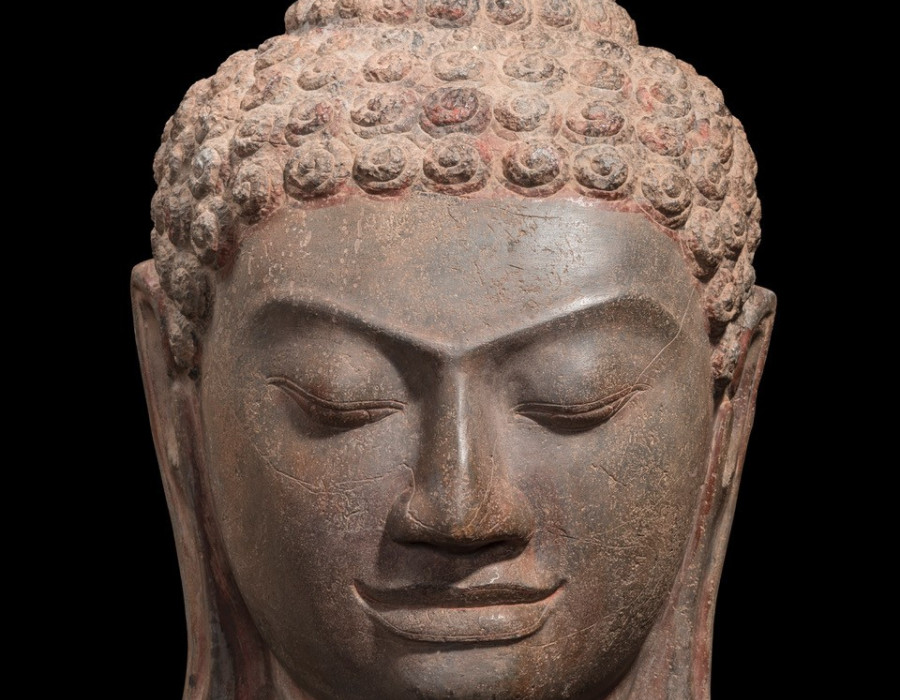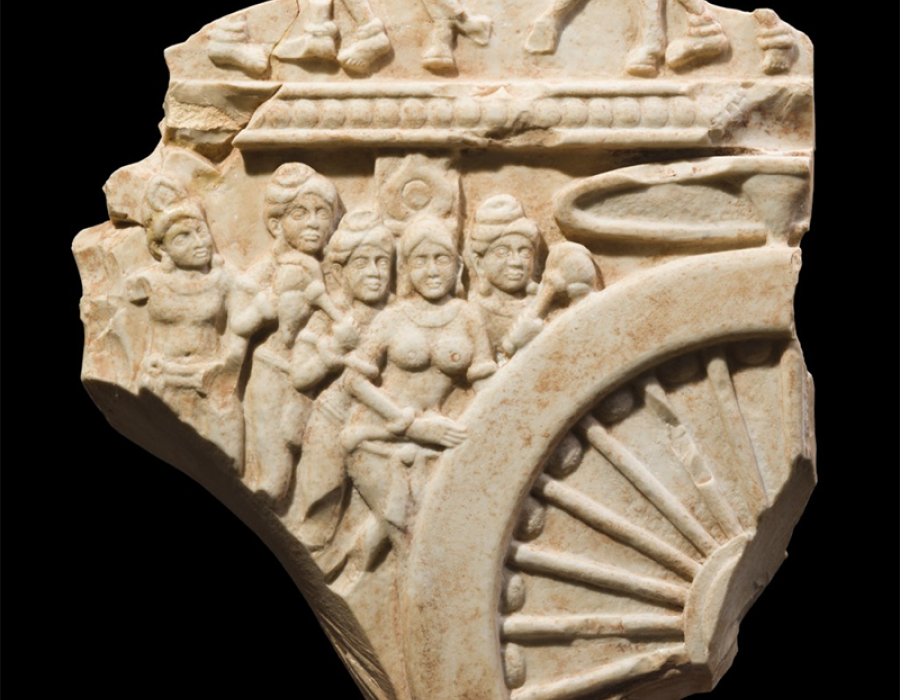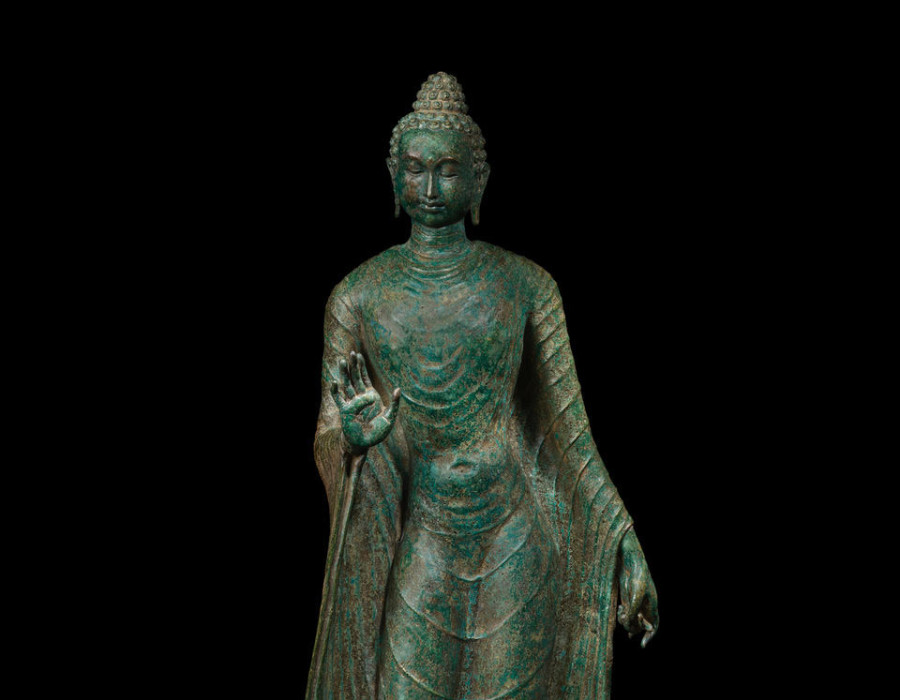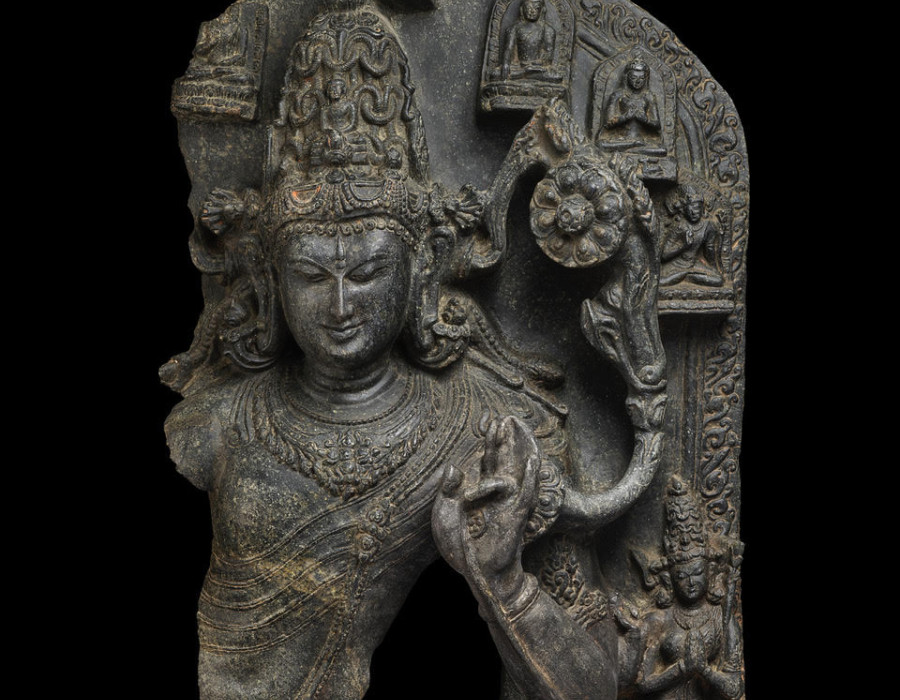
Martin Goodson
Images of Truth: Seated Buddha (Cambodia) 6-8th Century
The hard sandstone used to create this elegant Buddha rupa makes its formation an act of arduous devotion that accumulated great merit for sculptor and donor alike.

Seated Buddha from Cambodia
Seated Buddha
Cambodia, Mekong Delta region
Funan period, Angkor Borei style
6th to early 8th century
Stone
Height 48 cm
The peaceful image of the seated Buddha became a familiar sight wherever the faith was established but in the hands of Southeast Asian sculptors in the 6th to 7th centuries, both the authoritative figure of Gupta India and the elegant spiritual guide of Sri Lanka were transformed into an austerely spiritual figure combining slender physique and humane expressiveness, reflecting the congenial association of the indigenous and introduced Indian cultures that came about as a result of a mutually beneficial trading relationship.
The figure is sculpted in extremely hard sandstone and would have required the skills of the most proficient artist, using fine iron tools. The stone is highly polished and the surface glow appears to be almost metallic. Possibly this difficult to work stone was chosen specifically for this quality, because in 6th to 8th century Funan, very few metal images, none of these dimensions, were made. Such a raw material was prized by Hindus and Buddhists for their most revered statues as the creation of an icon in a difficult to work stone would have been considered an act of enormous spiritual merit for both the sculptor and, due to its cost, the individual who commissioned it.

Seated Buddha (Cambodia)
John Eskenazi
There is a Silk Road story about a famous sculptor who became afflicted with leprosy. It is perhaps difficult to appreciate now just how greatly this disease was feared both East and West. Lepers were required to live apart from the community and so our sculptor went to live in the small colony set aside for them in the hills overlooking his home town.
Although there was great fear surrounding the disease; the townsfolk did not abandon the lepers in fact they would deliver food, clothing and medicine to them.
In the meantime the sculptor had decided to dedicate what was left of his life to creating a statue of the Great Bodhisattva Samantabhadra, an emanation of the Buddha’s compassion. Over the following months he set to work and using all his skill began to carve out of a great stone block a likeness of the ‘compassion-in-daily life’ that this great being represents. As the months turned into years and as his disability grew the sculptor devised new and clever ways to overcome the obstacles to his aspiration to create a supreme representation despite his personal difficulties.
One evening, just as always, some townsfolk came to deliver food for the leper community. They were startled by a bright light coming from the cave of the sculptor and with some trepidation made their way over to peer inside.
What they saw made the hairs rise up on the back of their necks. They witnessed the sculptor kneeling before the finished statue of Samantabhadra, who had become flesh and stretched out his hands to lay them on the sculptor’s head.
In terror they fled back to the town and quickly the news spread of what they had seen. But it was the following day when the sculptor suddenly appeared in their midst now whole and healthy once again that truly filled them with wonder!
On the surface this story seems nothing more than a wish-fulfilling fairy story. But to think that this is all that it is would be to miss the jewel in the mire.
It says in the old scriptures that “Buddhas do but point the way.” In the end liberation, insight, nirvana – peace at heart, comes from our own efforts. The Buddha’s teachings do indeed point the way but if we do not take them on board and put them into practice then they remain merely words.
In Buddhist lore the bodhisattvas are there to provide assistance to all beings and bring them to ‘liberation’ from suffering. One who makes up his or her mind to forge a spiritual practice is like the artist and brings one’s own skills to bear on the task. Using the tools of discipline, a devoted energy and supreme patience one gives generously to the task. The un-hewn stone is one’s own self which is found within daily life.
The Buddha said that the true cause of our suffering is a clinging attachment to my-self; so it follows that ‘I’ cannot save myself – so how is the problem overcome?
As one ceaselessly gives oneself into the spiritual practice, the practice itself comes alive! It is the practice which is the Great Bodhisattva that saves and liberates, not ‘I’. And yet, without that effort and that giving of myself to the task it will not happen either. This is indeed a mystery to ‘I’, who sees himself as hub and centre of the universe! Surely, my life is down to my own ambition? Surely I must make something of myself? In fact what this story shows so well is that whatever the heart gives itself to, will come alive! If that giving is to ‘me’ and ‘mine’ only then it is a selfish creation that will result. If it is to something greater than ‘I’ and something that takes in the whole of Life (as a spiritual practice does), then a re-connection is made and the heavy burden of ‘I- only’ is forgotten.
In that forgetting of myself and reconnecting with the whole is, what one old master called, ‘a different life’.
Images of Truth
Buddhist art and iconography

